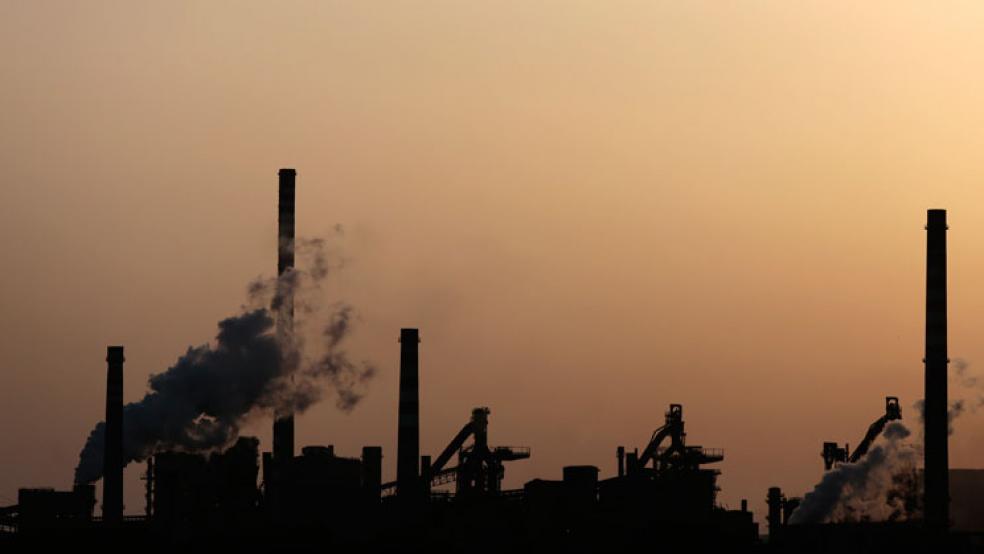For years, a controversy has raged between environmentalists and manufacturers over federal ozone standards. Environmentalists and public health advocates demand tougher regulation to protect the public from asthma and other dangerous respiratory illnesses and the National Association of Manufacturers and its allies insist that would lead to economic ruin and lost jobs.
The smog standards haven’t been updated since 2008, when the Bush administration set permissible ozone levels at 75 parts per billion. But the controversy was so politically charged that President Obama felt compelled in August 2011 to postpone a final Environmental Protection Agency decision until well after his 2012 reelection campaign.
Related: Industry in final ad blitz against new U.S. smog rule
On Thursday, the administration finally showed its hand, unveiling a seemingly Solomon-like compromise that tightened the standard a little more than industry officials favored, but less than environmentalists and the public health lobby demanded.
The new standard, announced by EPA Director Gina McCarthy, likely will force the utility industry and manufacturers to spend hundreds of millions of dollars on new “scrubbers” and other anti-pollution devices to lower emissions of ozone and fine particles to 70 parts per billion. But that is still much higher than the 60 parts per billion standard aggressively sought by environmentalists and the American Lung Association.
McCarthy defended the decision by saying that her responsibility is to embrace science-backed standards that protect the health of the American people.
"Put simply, ozone pollution means it hurts to breathe for those most vulnerable: our kids, our elderly and those suffering from heart and lung ailments," McCarthy said. "Today's action is one of the most important measures we can take for improving public health, reducing the costs of illness and protecting our children's health."
Smog is a yellowish or dark fog consisting of ground level ozone and fine particles released into the atmosphere by the chemical reaction of burning gasoline and diesel fuel in automobiles and trucks, the operation of coal fired power plants, and other industrial activities. Smog is worst on hot, sunny days, and scientists and physicians have long warned that it poses a serious public health hazard – especially among children and the elderly who suffer from upper respiratory and cardiovascular problems.
Excessive ozone levels also disproportionately hurt low-income communities and minorities, who are more likely to live close to sources of pollution and roadways but have less access to medical facilities and health insurance, according to experts.
As The New York Times reported yesterday, an earlier EPA draft proposal stated that an ozone standard of 70 parts per billion – the level finally agreed to by the administration – would prevent 325,000 cases of childhood asthma and 1,440 premature deaths. But a standard of 60 parts per billion – favored by environmentalists – would prevent 1.8 million asthma attacks and 7,900 premature deaths.
Related: As States Battle New EPA Rules, Some Make Surprising Progress on Emissions
“The Obama Administration has fallen short of setting a smog standard that fully protects the health of our families, making this decision a missed opportunity to clean up our air and protect the most vulnerable Americans,” Michael Brune, Executive Director of Sierra Club, said in a statement. “Lowering the smog standard from 75 to 70 ppb is a modest step in the right direction, but it doesn’t go far enough to protect the millions of Americans living in communities with dangerously high levels of smog pollution.
Harold Wimmer, president and CEO of the American Lung Association, said the new standard "simply does not reflect what the science shows is necessary to truly protect public health."
Industry officials responded to today’s EPA rulemaking under the Clean Air Act mostly with a sigh of relief, even as they prepared to challenge the new regulations in court or on Capitol Hill.
Related: How ‘King Coal’ Could Swing the 2016 Election
“Today, the Obama Administration finalized a rule that is overly burdensome, costly and misguided,” Jay Timmons, president and CEO of NAM, said in a statement. “For months, the Administration threatened to impose on manufacturers an even harsher rule, with even more devastating consequences. After an unprecedented level of outreach by manufacturers and other stakeholders, the worst-case scenario was avoided.”
“But make no mistake: the new ozone standard will inflict pain on companies that build things in America—and destroy job opportunities for American workers, he added. “Now it’s time for Congress to step up and take a stand for working families.”
Regardless of how high or low the government sets the air standards, industrial polluters for decades have found ways to skirt or ignore clean air requirements – and that is not likely to change. Just last week, the EPA revealed that the German car manufacturer Volkswagen had admitted to cheating emissions test in the U.S. by installing special software in 482,000 purportedly “clean energy” diesel VW vehicles.





